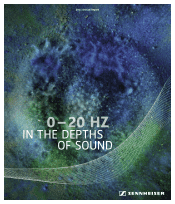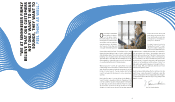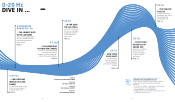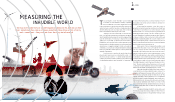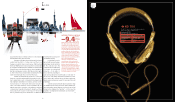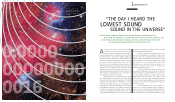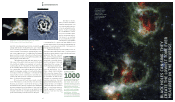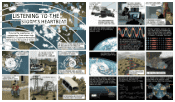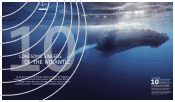Sennheiser 2011 Annual Report Download - page 2
Download and view the complete annual report
Please find page 2 of the 2011 Sennheiser annual report below. You can navigate through the pages in the report by either clicking on the pages listed below, or by using the keyword search tool below to find specific information within the annual report.
03
“WE AT SENNHEISER FIRMLY
BELIEVE THAT OUR CUSTOMERS
NOT ONLY WANT TO HEAR
SOUNDS, THEY WANT TO
FEEL THEM AS WELL.”
Prof. Dr. Jörg Sennheiser
One Sunday in midsummer
1883, meteorologists ac-
ross the globe made a
most extraordinary discovery. It
was August 26 and barometers
around the world recorded the
same phenomenon. All within a
short period of time. Over and
over again. What had happened?
A wave had traveled the Earth. The Krakatoa volcano near
Sumatra had exploded and it was so loud it could be heard
4,800 kilometers away. The sound continued on from there,
radiating out as inaudible waves and circling the planet
again and again. It was likely the first simultaneous, world-
wide registration of the phenomenon we call “infrasound”,
or sound below the threshold of human hearing.
When we speak of “sound”, we usually think of acoustic
sound; perhaps an echo. But that is sound we can hear. As an
audio specialist, we want to break this stereotype. In our last
trilogy of annual reports, “Seeing, Feeling and Tasting
Sound,” we began introducing you to some unusual per-
spectives.
Now, in the first part of our new trilogy “In the Depths of
Sound”, marvel as we explore infrasonic frequencies from
0-20 Hz; sounds that are almost imperceptible to the human
ear. Next year, we will continue with the “Heart of Sound”
(20-20,000 Hz). To finish our trilogy, we will soar to the
“Heights of Sound” (20,000-200,000 Hz), another range we
aren’t able to hear. Ultrasound
emits the most extreme vibra-
tions and though our ears may
not register it as it silently pas-
ses by, not so the moth.
So, what’s in store for us in “In
the Depths of Sound”? To start
off, a bit of audible sound and vi-
brations. Even the German poly-
math Hermann von Helmholtz knew that “all sounding bo-
dies are understood in shivers.” He made the observation
that strong tones make us feel “the whir of the air surroun-
ding us.” But, that is not always possible. Some frequencies
are so low that we can only record them using state-of-the-
art technology. For instance, X-ray telescopes and infrared
cameras or our headphones and microphones. Many of our
high-end models register frequencies in the depth of the in-
frasonic range. Why, you might ask, when we can’t even
hear these frequencies at all?
We at Sennheiser firmly believe that our customers not only
want to hear sounds, they want to feel them as well. Our
goal is to achieve perfection in mapping the entire frequen-
cy range in the utmost detail. I hope you enjoy being “In the
Depths of Sound.”

